Microwave-Assisted Palladium-Catalyzed Cross-Coupling Reactions: Generation of Carbon–Carbon Bond
Abstract
1. Introduction
2. Palladium-Catalyzed Cross-Coupling Reactions under Microwave Irradiation
2.1. Heck Cross-Coupling Reaction
2.2. Sonogashira Cross-Coupling Reaction
2.3. Suzuki Cross-Coupling Reaction
2.4. Stille Cross-Coupling Reaction
2.5. Negishi Cross-Coupling Reaction
2.6. Hiyama Cross-Coupling Reaction
2.7. Liebeskind-Srogl Cross-Coupling Reaction
2.8. Other Cross-Coupling Reaction
3. Conclusions
Author Contributions
Funding
Acknowledgments
Conflicts of Interest
References
- Pagliaro, M.; Pandarus, V.; Ciriminna, R.; Béland, F.; Carà, P.D. Heterogeneous versus Homogeneous Palladium Catalysts for Cross-Coupling Reactions. ChemCatChem 2012, 4, 432–445. [Google Scholar] [CrossRef]
- Salih, K.S.M.; Thiel, W.R. Palladium-Catalyzed Coupling Reactions with Magnetically Separable Nanocatalysts. In Palladium-Catalyzed Coupling Reactions: Practical Aspects and Future Developments, 1st ed.; Molnár, Á., Ed.; Wiley-VCH Verlag GmbH & Co. KGaA: Weinheim, Germany, 2013; pp. 57–78. [Google Scholar]
- Roya, D.; Uozumia, Z. Recent Advances in Palladium-Catalyzed Cross-Coupling Reactions at ppm to ppb Molar Catalyst Loadings. Adv. Synth. Catal. 2018, 360, 602–625. [Google Scholar] [CrossRef]
- De la Hoz, A.; Loupy, A. Microwaves in Organic Synthesis, 3rd ed.; Wiley-VCH Verlag GmbH & Co. KGaA: Weinheim, Germany, 2013. [Google Scholar]
- Gawande, M.B.; Shelke, S.N.; Zboril, R.; Varma, R.S. Microwave-Assisted Chemistry: Synthetic Applications for Rapid Assembly of Nanomaterials and Organics. Acc. Chem. Res. 2014, 47, 1338–1348. [Google Scholar] [CrossRef]
- Larhed, M.; Moberg, C.; Hallberg, A. Microwave-Accelerated Homogeneous Catalysis in Organic Chemistry. Acc. Chem. Res. 2002, 35, 717–727. [Google Scholar] [CrossRef]
- Kappe, C.O. Controlled Microwave Heating in Modern Organic Synthesis. Angew. Chem. Int. Ed. 2004, 43, 6250–6284. [Google Scholar] [CrossRef]
- Barge, A.; Tagliapietra, S.; Tei, L.; Cintas, P.; Cravotto, G. Pd-catalyzed Reactions Promoted by Ultrasound and/or Microwave Irradiation. Curr. Org. Chem. 2008, 12, 1588–1612. [Google Scholar] [CrossRef]
- Heck, R.F.; Nolley, J.P., Jr. Palladium-Catalyzed Vinylic Hydrogen Substitution Reactions with Aryl, Benzyl, and Styryl Halides. J. Org. Chem. 1972, 37, 2320–2322. [Google Scholar] [CrossRef]
- Mizoroki, T.; Mori, K.; Ozaki, A. Arylation of Olefin with Aryl Iodide Catalyzed by Palladium. Bull. Chem. Soc. Jpn. 1971, 44, 581. [Google Scholar] [CrossRef]
- Beletskaya, I.P.; Cheprakov, A.V. The Heck Reaction as a Sharpening Stone of Palladium Catalysis. Chem. Rev. 2000, 100, 3009–3066. [Google Scholar] [CrossRef] [PubMed]
- Jagtap, S. Heck Reaction—State of the Art. Catalysts 2017, 7, 267. [Google Scholar] [CrossRef]
- Cabri, W.; Candiani, I. Recent Developments and New Perspectives in the Heck Reaction. Acc. Chem. Res. 1995, 28, 2–7. [Google Scholar] [CrossRef]
- Arvela, R.K.; Pasquini, S.; Larhed, M. Highly Regioselective Internal Heck Arylation of Hydroxyalkyl Vinyl Ethers by Aryl Halides in Water. J. Org. Chem. 2007, 72, 6390–6396. [Google Scholar] [CrossRef] [PubMed]
- Olofsson, K.; Larhed, M.; Hallberg, A. Highly Regioselective Palladium-Catalyzed Internal Arylation of Allyltrimethylsilane with Aryl Triflates. J. Org. Chem. 1998, 63, 5076–5079. [Google Scholar] [CrossRef]
- Datta, G.K.; von Schenck, H.; Hallberg, A.; Larhed, M. Selective Terminal Heck Arylation of Vinyl Ethers with Aryl Chlorides: A Combined Experimental-Computational Approach Including Synthesis of Betaxolol. J. Org. Chem. 2006, 71, 3896–3903. [Google Scholar] [CrossRef] [PubMed]
- Vallin, K.S.A.; Emilsson, P.; Larhed, M.; Hallberg, A. High-Speed Heck Reactions in Ionic Liquid with Controlled Microwave Heating. J. Org. Chem. 2002, 67, 6243–6246. [Google Scholar] [CrossRef] [PubMed]
- Demel, J.; Park, S.-E.; Čejka, J. Štěpniěka, P. The use of palladium nanoparticles supported with MCM-41 and basic (Al)MCM-41 mesoporous sieves in microwave-assisted Heck reaction. Catal. Today 2008, 132, 63–67. [Google Scholar] [CrossRef]
- Choudary, B.M.; Madhi, S.; Chowdari, N.S.; Kantam, M.L.; Sreedhar, B. Layered Double Hydroxide Supported Nanopalladium Catalyst for Heck-, Suzuki-, Sonogashira-, and Stille-Type Coupling Reactions of Chloroarenes. J. Am. Chem. Soc. 2002, 124, 14127–14136. [Google Scholar] [CrossRef]
- Ratti, R. Ionic Liquids: Synthesis and Applications in Catalysis. Adv. Chem. 2014, 2014, 729842. [Google Scholar] [CrossRef]
- Xie, X.; Lu, J.; Chen, B.; Han, J.; She, X.; Pan, X. Pd/C-catalyzed Heck reaction in ionic liquid accelerated by microwave heating. Tetrahedron Lett. 2004, 45, 809–811. [Google Scholar] [CrossRef]
- Glasnov, T.N.; Stadlbauer, W.; Kappe, C.O. Microwave-Assisted Multistep Synthesis of Functionalized 4-Arylquinolin-2(1H)-ones Using Palladium-Catalyzed Cross-Coupling Chemistry. J. Org. Chem. 2005, 70, 3864–3870. [Google Scholar] [CrossRef]
- Du, L.-H.; Wang, Y.-G. Microwave-Promoted Heck Reaction Using Pd(OAc)2 as Catalyst under Ligand-Free and Solvent-Free Conditions. Synth. Commun. 2007, 37, 217–222. [Google Scholar] [CrossRef]
- Siamaki, A.R.; Khder, A.E.R.S.; Abdelsayed, V.; El-Shall, M.S.; Gupton, B.F. Microwave-assisted synthesis of palladium nanoparticles supported on graphene: A highly active and recyclable catalyst for carbon–carbon cross-coupling reactions. J. Catal. 2011, 279, 1–11. [Google Scholar] [CrossRef]
- Cravotto, G.; Gaudino, E.C.; Tagliapietra, S.; Carnaroglio, D.; Procopio, A. A Green Approach to Heterogeneous Catalysis Using Ligand-Free, Metal-Loaded Cross-Linked Cyclodextrins. Green Process Synth. 2012, 1, 269–273. [Google Scholar] [CrossRef]
- Baruah, D.; Das, R.N.; Hazarika, S.; Konwar, D. Biogenic synthesis of cellulose supported Pd(0) nanoparticles using hearth wood extract of Artocarpus lakoocha Roxb—A green, efficient and versatile catalyst for Suzuki and Heck coupling in water under microwave heating. Catal. Commun. 2015, 72, 73–80. [Google Scholar] [CrossRef]
- Benyettou, F.; Motte, L.; Traboulsi, H.; Mazher, J.; Pasricha, R.; Olsen, J.-C.; Trabolsi, A.; Guenin, E. Palladium-Loaded Cucurbit[7]uril-Modified Iron Oxide Nanoparticles for C—C Cross-Coupling Reactions. Chem. Eur. J. 2018, 24, 2349–2353. [Google Scholar] [CrossRef] [PubMed]
- Kyne, S.H.; Camp, J.E. Use of Monosaccharides in Metal-Catalyzed Coupling Reactions. ACS Sustain. Chem. Eng. 2017, 5, 41–48. [Google Scholar] [CrossRef]
- Jha, A.K.; Shahni, R.K.; Jain, N. D-Glucosamine as a Green Ligand for Palladium-Catalyzed Cross-Coupling of Aryl and Heteroaryl Halides. Synlett 2015, 26, 259–264. [Google Scholar] [CrossRef]
- Lindh, J.; Enquist, P.-A.; Pilotti, Å.; Nilsson, P.; Larhed, M. Efficient Palladium(II) Catalysis under Air. Base-Free Oxidative Heck Reactions at Room Temperature or with Microwave Heating. J. Org. Chem. 2007, 72, 7957–7962. [Google Scholar] [CrossRef]
- Rudzinski, D.M.; Leadbeater, N.E. Microwave heating and conventionally heated continuous-flow processing as tools for performing cleaner palladium-catalyzed decarboxylative couplings using oxygen as the oxidant—A proof of principle study. Green Process Synth. 2013, 2, 323–328. [Google Scholar] [CrossRef]
- Wang, D.; Gao, S. Sonogashira coupling in natural product synthesis. Org. Chem. Front. 2014, 1, 556–566. [Google Scholar] [CrossRef]
- Chinchilla, R.; Nájera, C. Recent advances in Sonogashira reactions. Chem. Soc. Rev. 2011, 40, 5084–5121. [Google Scholar] [CrossRef] [PubMed]
- Karak, M.; Barbosa, L.C.A.; Hargadenc, G.C. Recent mechanistic developments and next generation catalysts for the Sonogashira coupling reaction. RSC Adv. 2014, 4, 53442–53466. [Google Scholar] [CrossRef]
- Chen, Y.; Markina, N.A.; Larock, R.C. An efficient, microwave-assisted, one-pot synthesis of indoles under Sonogashira conditions. Tetrahedron 2009, 65, 8908–8915. [Google Scholar] [CrossRef] [PubMed]
- Conreaux, D.; Delaunay, T.; Desbordes, P.; Monteiro, N.; Balme, G. A convenient access to furo[3,2-c]pyridin-6(5H)-ones by the reaction of 5-iodo-4-methoxy-2-pyridones with terminal alkynes under microwave-enhanced Sonogashira conditions. Tetrahedron Lett. 2009, 50, 3299–3301. [Google Scholar] [CrossRef]
- Puechmongkol, S.; Paosawatyanyong, B.; Bhanthumnavin, W. Environmentally benign microwave-assisted Sonogashira preparation of aromatic compounds. Mater. Sci. Forum 2011, 695, 113–116. [Google Scholar] [CrossRef]
- Olivier, J.-H.; Camerel, F.; Ziessel, R.; Retailleau, P.; Amadouc, J.; Pham-Huu, C. Microwave-promoted hydrogenation and alkynylation reactions with palladium-loaded multi-walled carbon nanotubesw. New J. Chem. 2008, 32, 920–924. [Google Scholar] [CrossRef]
- Lee, M.; Kim, B.-H.; Lee, Y.; Kim, B.-T.; Park, J.B. Synthesis and Characterization of Graphene and Graphene Oxide Based Palladium Nanocomposites and Their Catalytic Applications in Carbon-Carbon Cross-Coupling Reactions. Bull. Korean Chem. Soc. 2014, 35, 1979–1985. [Google Scholar] [CrossRef]
- Sedelmeier, J.; Ley, S.V.; Lange, H.; Baxendale, I.R. Pd-EnCatTM TPP30 as a Catalyst for the Generation of Highly Functionalized Aryl- and Alkenyl-Substituted Acetylenes via Microwave-Assisted Sonogashira Type Reactions. Eur. J. Org. Chem. 2009, 4412–4420. [Google Scholar] [CrossRef]
- Chang, W.; Shin, J.; Chae, G.; Jang, S.R.; Ahn, B.J. Microwave-assisted Sonogashira cross-coupling reaction catalyzed by Pd-MCM-41 under solvent-free conditions. J. Ind. Eng. Chem. 2013, 19, 739–743. [Google Scholar] [CrossRef]
- Joy, M.N.; Bodke, Y.D.; Khader, K.K.A.; Sajith, A.M. A rapid approach for the copper, amine, and ligand-free Sonogashira coupling of 4-methyl-7-nonafluorobutylsulfonyloxy coumarins under microwave irradiation. Tetrahedron Lett. 2014, 55, 2355–2361. [Google Scholar] [CrossRef]
- Lei, Y.; Hu, T.; Wu, X.; Wu, Y.; Xiang, H.; Sun, H.; You, Q.; Zhang, X. Microwave-assisted copper- and palladium-catalyzed sonogashira-type coupling of aryl bromides and iodides with trimethylsilylacetylene. Tetrahedron Lett. 2016, 57, 1100–1103. [Google Scholar] [CrossRef]
- Hajipour, A.R.; Rafiee, F. Microwave-assisted Sonogashira cross-coupling reaction catalyzed by CN-ortho-palladated complex of tribenzylamine under copper-free conditions. J. Iran Chem. Soc. 2015, 12, 1163–1169. [Google Scholar] [CrossRef]
- Küçükbay, H.; Yilmaz, Ü.; Yavuz, K.; Buĝday, N. Synthesis, characterization, and microwave-assisted catalytic activity in Heck, Suzuki, Sonogashira, and Buchwald {Hartwig cross-coupling reactions of novel benzimidazole salts bearing N-phthalimidoethyl and benzyl moieties. Turk. J. Chem. 2015, 39, 1265–1278. [Google Scholar] [CrossRef]
- Shah, D.; Kaur, H. Supported palladium nanoparticles: A general sustainable catalyst formicrowave enhanced carbon-carbon coupling reactions. J. Mol. Catal. A Chem. 2016, 424, 171–180. [Google Scholar] [CrossRef]
- Biffis, A.; Centomo, P.; Del Zotto, A.; Zecca, M. Pd Metal Catalysts for Cross-Couplings and Related Reactions in the 21st Century: A Critical Review. Chem. Rev. 2018, 118, 2249–2295. [Google Scholar] [CrossRef] [PubMed]
- Gazvoda, M.; Virant, M.; Pinter, B.; Košmrlj, J. Mechanism of copper-free Sonogashira reaction operates through palladium-palladium transmetallation. Nat. Commun. 2018, 9, 4814. [Google Scholar] [CrossRef]
- Martina, K.; Manzoli, M.; Gaudino, E.C.; Cravotto, G. Eco-Friendly Physical Activation Methods for Suzuki–Miyaura Reactions. Catalysts 2017, 7, 98. [Google Scholar] [CrossRef]
- Grushin, V.V.; Alper, H. Transformations of Chloroarenes, Catalyzed by Transition-Metal Complexes. Chem. Rev. 1994, 94, 1047–1062. [Google Scholar] [CrossRef]
- Braga, A.A.; Ujaque, G.; Maseras, F. Mechanism of Palladium-Catalyzed Cross-Coupling Reactions. In Computational Modeling for Homogeneous and Enzymatic Catalysis; Morokuma, K., Musaev, D.G., Eds.; Wiley-VCH Verlag GmbH & Co. KGaA: Weinheim, Germany, 2008; pp. 109–130. [Google Scholar] [CrossRef]
- Blettner, C.G.; König, W.A.; Stenzel, W.; Schotten, T. Microwave-Assisted Aqueous Suzuki Cross-Coupling Reactions. J. Org. Chem. 1999, 64, 3885–3890. [Google Scholar] [CrossRef]
- Leadbeater, N.E.; Marco, M. Fast, easy, clean chemistry by using water as a solvent and microwave heating: the Suzuki coupling as an illustration. J. Org. Chem. 2003, 68, 888–892. [Google Scholar] [CrossRef]
- Poondra, R.R.; Fischer, P.M.; Turner, N.J. Efficient Palladium-Catalyzed Cross-Coupling of â-Chloroalkylidene/arylidene Malonates Using Microwave Chemistry. J. Org. Chem. 2004, 69, 6920–6922. [Google Scholar] [CrossRef] [PubMed]
- Zhu, R.; Qu, F.; Quéléver, G.; Peng, L. Direct synthesis of 5-aryltriazole acyclonucleosides via Suzuki coupling in aqueous solution. Tetrahedron Lett. 2007, 48, 2389–2393. [Google Scholar] [CrossRef]
- Nun, P.; Martinez, J.; Lamaty, F. Solvent-Free Microwave-Assisted Suzuki–Miyaura Coupling Catalyzed by PEPPSI-iPr. Synlett 2009, 11, 1761–1764. [Google Scholar] [CrossRef]
- Leadbeater, N.E.; Williams, V.A.; Barnard, T.M.; Collins, M.J., Jr. Open-Vessel Microwave-Promoted Suzuki Reactions Using Low Levels of Palladium Catalyst: Optimization and Scale-Up. Org. Process Res. Dev. 2006, 10, 833–837. [Google Scholar] [CrossRef]
- Freitag, J.; Hermann, M.; Nüchter, M.; Ondruschka, B.; Schneider, F.; Stolle, A. Microwave assisted synthesis using catalysts on controlled pore glass carriers. Opt. Appl. 2005, 35, 745–752. [Google Scholar]
- Worm-Leonhard, K.; Meldal, M. Green Catalysts: Solid-Phase Peptide Carbene Ligands in Aqueous Transition-Metal Catalysis. Eur. J. Org. Chem. 2008, 5244–5253. [Google Scholar] [CrossRef]
- Kabalka, G.W.; Pagni, R.M.; Wang, L.; Namboodiri, V.; Hair, C.M. Microwave-assisted, solventless Suzuki coupling reactions on palladium-doped alumina. Green Chem. 2000, 2, 120–122. [Google Scholar] [CrossRef]
- Kabalka, G.W.; Wang, L.; Pagni, R.M.; Hair, C.M.; Namboodiri, V. Solventless Suzuki Coupling Reactions On Palladium-Doped Potassium Fluoride Alumina. Synthesis 2003, 2, 217–222. [Google Scholar] [CrossRef]
- Irfan, M.; Fuchs, M.; Glasnov, T.N.; Kappe, C.O. Microwave-Assisted Cross-Coupling and Hydrogenation Chemistry by Using Heterogeneous Transition-Metal Catalysts: An Evaluation of the Role of Selective Catalyst Heating. Chem. Eur. J. 2009, 15, 11608–11618. [Google Scholar] [CrossRef]
- Arvela, R.K.; Leadbeater, N.E. Suzuki Coupling of Aryl Chlorides with Phenylboronic Acid in Water, Using Microwave Heating with Simultaneous Cooling. Org. Lett. 2005, 7, 2101–2104. [Google Scholar] [CrossRef]
- Baxendale, I.R.; Griffiths-Jones, C.M.; Ley, S.V.; Tranmer, G.K. Microwave-Assisted Suzuki Coupling Reactions with an Encapsulated Palladium Catalyst for Batch and Continuous-Flow Transformations. Chem. Eur. J. 2006, 12, 4407–4416. [Google Scholar] [CrossRef] [PubMed]
- Cannalire, R.; Tiecco, M.; Cecchetti, V.; Germani, R.; Manfroni, G. Advantageous Use of Ionic Liquids for the Synthesis of Pharmaceutically Relevant Quinolones. Eur. J. Org. Chem. 2018, 2977–2983. [Google Scholar] [CrossRef]
- Li, L.; Sheng-hai, L.; Ri-hua, J. Microwave-assisted Palladium-micelle-catalyzed Suzuki Cross-coupling Reaction in Water. Chem. Res. Chin. Univ. 2011, 27, 589–591. [Google Scholar]
- Camp, J.E.; Dunsford, J.J.; Cannons, E.P.; Restorick, W.J.; Gadzhieva, A.; Fay, M.W.; Smith, R.J. Glucose-Derived Palladium(0) Nanoparticles as in Situ-Formed Catalysts for Suzuki−Miyaura Cross-Coupling Reactions in Isopropanol. ACS Sustain. Chem. Eng. 2014, 2, 500–505. [Google Scholar] [CrossRef]
- Pan, D.; Wu, A.; Li, P.; Xu, H.; Lei, F.; Shen, L. Palladium-loaded renewable polymer as a green heterogeneous catalyst for cross-coupling reactions under microwave irradiation. J. Chem. Res. 2014, 38, 715–718. [Google Scholar] [CrossRef]
- Massaro, M.; Riela, S.; Cavallaro, G.; Gruttadauria, M.; Milioto, S.; Noto, R.; Lazzara, G. Eco-friendly functionalization of natural halloysite clay nanotube with ionic liquids by microwave irradiation for Suzuki coupling reaction. J. Organomet. Chem. 2014, 749, 410–415. [Google Scholar] [CrossRef]
- Massaro, M.; Riela, S.; Lazzara, G.; Gruttadauria, M.; Milioto, S.; Noto, R. Green conditions for the Suzuki reaction using microwave irradiation and a new HNT-supported ionic liquid-like phase (HNT-SILLP) catalyst. Appl. Organometal. Chem. 2014, 28, 234–238. [Google Scholar] [CrossRef]
- Massaro, M.; Riela, S.; Cavallaro, G.; Colletti, C.G.; Milioto, S.; Noto, R.; Parisi, F.; Lazzara, G. Palladium supported on Halloysite-triazolium salts as catalyst for ligand free Suzuki cross-coupling in water under microwave irradiation. J. Mol. Catal. A Chem. 2015, 408, 12–19. [Google Scholar] [CrossRef]
- Baran, T.; Inanan, T.; Menteş, A. Synthesis, characterization, and catalytic activity in Suzuki couplingand catalase-like reactions of new chitosan supported Pd catalyst. Carbohydr. Polym. 2016, 145, 20–29. [Google Scholar] [CrossRef] [PubMed]
- Baran, T.; Sargin, I.; Kaya, M.; Menteş, A. An environmental catalyst derived from biological waste materials forgreen synthesis of biaryls via Suzuki coupling reactions. J. Mol. Catal. A Chem. 2016, 420, 216–221. [Google Scholar] [CrossRef]
- Baran, T.; Sargin, I.; Kaya, M.; Menteş, A.; Ceter, T. Design and application of sporopollenin microcapsule supported palladium catalyst: Remarkably high turnover frequency and reusability in catalysis of biaryls. J. Colloid Interface Sci. 2017, 486, 194–203. [Google Scholar] [CrossRef] [PubMed]
- Baran, N.Y.; Baran, T.; Menteş, A. Production of novel palladium nanocatalyst stabilized with sustainable chitosan/cellulose composite and its catalytic performance in Suzuki-Miyaura coupling reactions. Carbohydr. Polym. 2018, 181, 596–604. [Google Scholar] [CrossRef] [PubMed]
- Ashok, D.; Lakshmi, B.V.; Sarasija, M. An Efficient Microwave-Assisted Suzuki Cross-Coupling on Coumarin Derivatives in Water and Evaluation of Antimicrobial Activity. Lett. Org. Chem. 2016, 13, 76–84. [Google Scholar] [CrossRef][Green Version]
- Leist, M.; Kerner, C.; Ghoochany, L.T.; Farsadpour, S.; Fizia, A.; Neu, J.P.; Schön, F.; Sun, Y.; Oelkers, B.; Lang, J.; et al. Roll-over cyclometalation: A versatile tool to enhance the catalytic activity of transition metal complexes. J. Organomet. Chem. 2018, 863, 30–43. [Google Scholar] [CrossRef]
- Savitha, B.; Sajith, A.M.; Reddy, E.K.; Kumar, C.S.A.; Padusha, M.S.A. Suzuki-Miyaura cross–coupling reaction in water: Facile synthesis of (hetero) aryl uracil bases using potassiumorganotrifluoroborates under microwave irradiation. ChemistrySelect 2016, 1, 4721–4725. [Google Scholar] [CrossRef]
- Gayakhe, V.; Ardhapure, A.; Kapdi, A.R.; Sanghvi, Y.S.; Serrano, J.L.; García, L.; Pérez, J.; García, J.; Sánchez, G.; Fischer, C.; et al. Water-Soluble Pd−Imidate Complexes: Broadly Applicable Catalysts for the Synthesis of Chemically Modified Nucleosides via Pd-Catalyzed Cross-Coupling. J. Org. Chem. 2016, 81, 2713–2729. [Google Scholar] [CrossRef] [PubMed]
- Bai, L.; Wang, J.-X. Reusable, Polymer-Supported, Palladium-Catalyzed, Atom-Efficient Coupling Reaction of Aryl Halides with Sodium Tetraphenylborate in Water by Focused Microwave Irradiation. Adv. Synth. Catal. 2008, 350, 315–320. [Google Scholar] [CrossRef]
- Bai, L. Atom-efficient coupling reaction of aryl bromides with sodium tetraphenylborate catalyzed by reusable Pd/C in water under focused microwave irradiation. Chin. Chem. Lett. 2009, 20, 158–160. [Google Scholar] [CrossRef]
- Lee, J.-H.; Park, S.Y.; Park, A.; Yum, E.K. Diversification of Imidazo[1,2-a]pyridines under Microwave–Assisted Palladium-Catalyzed Suzuki Reaction. J. Korean Chem. Soc. 2017, 61, 299–303. [Google Scholar] [CrossRef]
- Sharma, M.; Sharma, M.; Hazarika, A.; Satyanarayana, L.; Karunakar, G.V.; Bania, K.K. C–Cl bond activation with Pd(II)-NiO nanoparticles supported on zeolite-Y: The role of charge transfer transition. Mol. Catal. 2017, 432, 210–219. [Google Scholar] [CrossRef]
- Elazab, H.A.; Sadek, M.A.; El-Idreesy, T.T. Microwave-assisted synthesis of palladium nanoparticles supported on copper oxide in aqueous medium as an efficient catalyst for Suzuki cross-coupling reaction. Adsorpt. Sci. Technol. 2018, 36, 1352–1365. [Google Scholar] [CrossRef]
- Şengül, A.; Hanhan, M.E. Water Soluble Benzimidazole Containing Ionic Palladium(II) Complex for Rapid Microwave-Assisted Suzuki Reaction of Aryl Chlorides. Appl. Organometal. Chem. 2018, 32, e4288. [Google Scholar] [CrossRef]
- Tairai, A.; Sarmah, C.; Das, P. A highly efficient catalytic system for microwave-assisted Suzuki-Miyaura reactions as well as room temperature homocoupling reactions of arylboronic acids in aqueous media. Indian J. Chem. 2012, 51B, 843–848. [Google Scholar]
- Dawood, K.M.; Shaaban, M.R.; Elamin, M.B.; Farag, A.M. Catalytic activity of some oxime-based Pd(II)-complexes in Suzuki coupling of aryl and heteroaryl bromides in water. Arabian J. Chem. 2017, 10, 473–479. [Google Scholar] [CrossRef]
- Baran, T.; Baran, N.Y.; Menteş, A. A new air and moisture stable robust bio-polymer based palladium catalyst for highly efficient synthesis of biaryls compounds. Appl. Organometal. Chem. 2018, 32, e4076. [Google Scholar] [CrossRef]
- Cordovilla, C.; Bartolomé, C.; Martínez-Ilarduya, J.M.; Espinet, P. The Stille Reaction, 38 Years Later. ACS Catal. 2015, 5, 3040–3053. [Google Scholar] [CrossRef]
- Barłóg, M.; Zhang, X.; Kulai, I.; Yang, D.S.; Sredojevic, D.N.; Sil, A.; Ji, X.; Salih, K.S.M.; Bazzi, H.S.; Bronstein, H.; et al. Indacenodithiazole-Ladder-Type Bridged Di(thiophene)-Difluoro-Benzothiadiazole-Conjugated Copolymers as Ambipolar Organic Field-Effect Transistors. Chem. Mater. 2019, 31, 9488–9496. [Google Scholar] [CrossRef]
- Maleczka, R.E., Jr.; Lavis, J.M.; Clark, D.H.; Gallagher, W.P. Microwave-Assisted One-Pot Hydrostannylation/Stille Couplings. Org. Lett. 2000, 2, 3655–3658. [Google Scholar] [CrossRef]
- Tan, X.; Zhou, Z.J.; Zhang, J.X.; Duan, X.H. Efficient One-Pot Cross-Coupling of Two Aryl Halides by Stannylation/Stille Reaction in Water under Microwave Irradiation. Eur. J. Org. Chem. 2014, 5153–5157. [Google Scholar] [CrossRef]
- Appukkuttan, P.; Dehaen, W.; Van der Eycken, E. Suzuki-Miyaura and Stille Reactions as Key Steps in the Synthesis of Diversely Functionalized Amaryllidaceae Alkaloid Analogs Bearing a 5,6,7,8-Tetrahydrobenzo [c,e] Azocine Skeleton. Comb. Chem. High Throughput Screen. 2007, 10, 790–801. [Google Scholar] [CrossRef]
- Cebrián, C.; De Cózar, A.; Prieto, P.; Díaz-Ortiz, A.; De la Hoz, A.; Carrillo, J.R.; Rodriguez, A.M.; Montilla, F. Microwave-Assisted Stille Reactions as a Powerful Tool for Building Polyheteroaryl Systems Bearing a (1H)-1,2,4-Triazole Moiety. Synlett 2010, 55–60. [Google Scholar] [CrossRef]
- Susanto, W.; Chu, C.-Y.; Ang, W.J.; Chou, T.-C.; Lo, L.-C.; Lam, Y. Fluorous Oxime Palladacycle: A Precatalyst for Carbon−Carbon Coupling Reactions in Aqueous and Organic Medium. J. Org. Chem. 2012, 77, 2729–2742. [Google Scholar] [CrossRef] [PubMed]
- Hajipour, A.R.; Karamia, K.; Rafiee, F. An efficient Stille cross-coupling reaction catalyzed by ortho-palladated complex of tribenzylamine under microwave irradiation. Appl. Organometal. Chem. 2012, 26, 27–31. [Google Scholar] [CrossRef]
- Xu, G.; Zhang, Y.; Wang, K.; Fu, Y.; Du, Z. Microwave-assisted Stille cross-coupling reaction catalysed by in situ formed palladium nanoparticles. J. Chem. Res. 2015, 39, 399–402. [Google Scholar] [CrossRef]
- Öhberg, L.; Westman, J. One-pot Three-step Solution Phase Syntheses of Thiohydantoins using Microwave Heating. Synlett 2001, 1893–1896. [Google Scholar] [CrossRef]
- Stanetty, P.; Schnürch, M.; Mihovilovic, M.D. Synthesis of Pyridinyl-Pyrimidines via Pd-Catalyzed Cross-Coupling Reactions: A Comparison of Classical Thermal and Microwave Assisted Reaction Conditions. Synlett 2003, 1862–1864. [Google Scholar] [CrossRef]
- Walla, P.; Kappe, C.O. Microwave-assisted Negishi and Kumada cross-coupling reactions of aryl chlorides. Chem. Commun. 2004, 564–565. [Google Scholar] [CrossRef]
- Mutule, I.; Suna, E. Arylzinc species by microwave assisted Grignard formation–transmetallation sequence: application in the Negishi coupling. Tetrahedron 2005, 61, 11168–11176. [Google Scholar] [CrossRef]
- Genov, M.; Almorín, A.; Espinet, P. Microwave assisted asymmetric Suzuki-Miyaura and Negishi cross-coupling reactions: Synthesis of chiral binaphthalenes. Tetrahedron Asymmetry 2007, 18, 625–627. [Google Scholar] [CrossRef]
- Motwani, H.V.; Larhed, M. Diarylated Ethanones from Mo(CO)6-Mediated and Microwave-Assisted Palladium-Catalysed Carbonylative Negishi Cross-Couplings. Eur. J. Org. Chem. 2013, 4729–4733. [Google Scholar] [CrossRef]
- Foubelo, F.; Nájera, C.; Yus, M. The Hiyama Cross-Coupling Reaction: New Discoveries. Chem. Rec. 2016, 16, 2521–2533. [Google Scholar] [CrossRef] [PubMed]
- Clarke, M.L. First Microwave-Accelerated Hiyama Coupling of Aryl- and Vinylsiloxane Derivatives: Clean Cross-Coupling of Aryl Chlorides within Minutes. Adv. Synth. Catal. 2005, 347, 303–307. [Google Scholar] [CrossRef]
- Peñafiel, I.; Pastor, I.M.; Yus, M.; Esteruelas, M.A.; Oliván, M.; Oñate, E. (NHC)Palladium Complexes from Hydroxy-Functionalized Imidazolium Salts as Catalyst for the Microwave-Accelerated Fluorine-Free Hiyama Reaction. Eur. J. Org. Chem. 2011, 7174–7181. [Google Scholar] [CrossRef]
- Hajipour, A.R.; Rafiee, F. Microwave-assisted Stille and Hiyama cross-coupling reactions catalyzed by ortho-palladated complexes of homoveratrylamine. Tetrahedron Lett. 2012, 53, 4661–4664. [Google Scholar] [CrossRef]
- Hajipour, A.R.; Rafiee, F.; Najafi, N. Hiyama cross-coupling reaction catalyzed by a palladium salt of 1-benzyl-4-aza-1-azoniabicyclo [2.2.2]octane chloride under microwave irradiation. Appl. Organometal. Chem. 2014, 28, 217–220. [Google Scholar] [CrossRef]
- Martínez, R.; Pastor, I.M.; Yus, M. 1,2-Functionalized Imidazoles as Palladium Ligands: An Efficient and Robust Catalytic System for the Fluorine-Free Hiyama Reaction. Eur. J. Org. Chem. 2014, 872–877. [Google Scholar] [CrossRef]
- Shah, D.; Kaur, H. Microwave Assisted Fluoride-Free Hiyama Cross-Coupling Reaction Catalyzed by Pd (0)–PVP Nanoparticles. Curr. Catal. 2014, 3, 39–46. [Google Scholar] [CrossRef]
- Liebeskind, L.S.; Srogl, J. Thiol Ester-Boronic Acid Coupling. A Mechanistically Unprecedented and General Ketone Synthesis. J. Am. Chem. Soc. 2000, 122, 11260–11261. [Google Scholar] [CrossRef]
- Prokopcová, H.; Kappe, C. The Liebeskind–Srogl C‒C Cross-Coupling Reaction. Angew. Chem. Int. Ed. 2009, 48, 2276–2286. [Google Scholar] [CrossRef]
- Cheng, H.-G.; Chen, H.; Liu, Y.; Zhou, Q. The Liebeskind–Srogl Cross-Coupling Reaction and its Synthetic Applications. Asian J. Org. Chem. 2018, 7, 490–508. [Google Scholar] [CrossRef]
- Lengar, A.; Kappe, C.O. Tunable Carbon−Carbon and Carbon−Sulfur Cross-Coupling of Boronic Acids with 3,4-Dihydropyrimidine-2-thiones. Org. Lett. 2004, 6, 771–774. [Google Scholar] [CrossRef] [PubMed]
- Prpkopcová, H.; Pisani, L.; Kappe, C.O. Synthesis of 5-Aroyldihydropyrimidinones via Liebeskind–Srogl Thiol Ester–Boronic Acid Cross-Coupling. Synlett 2007, 43–46. [Google Scholar] [CrossRef]
- Pisani, L.; Prpkopcová, H.; Kremsner, J.M.; Kappe, C.O. 5-Aroyl-3,4-dihydropyrimidin-2-one Library Generation via Automated Sequential and Parallel Microwave-assisted Synthesis Techniques. J. Comb. Chem. 2007, 9, 415–421. [Google Scholar] [CrossRef] [PubMed]
- Čerňová, M.; Pohl, R.; Klepetářová, B.; Hocek, M. A General Regioselective Synthesis of 2,4-Diarylpyrimidines from 2-Thiouracil through Two Orthogonal Cross-Coupling Reactions. Synlett 2012, 23, 1305–1308. [Google Scholar] [CrossRef]
- Krömer, M.; Klečka, M.; Slavětínská, L.; Klepetářová, B.; Hocek, M. Chemoselective Synthesis of 4,5-Diarylpyrrolo [2,3-d] pyrimidines (6,7-Diaryl-7-deazapurines) by Consecutive Suzuki and Liebeskind–Srogl Cross-Couplings. Eur. J. Org. Chem. 2014, 7203–7210. [Google Scholar] [CrossRef]
- Mehta, V.P.; Sharma, A.; Van der Eycken, E. The First Palladium-Catalyzed Desulfitative Sonogashira-Type Cross-Coupling of (Hetero)aryl Thioethers with Terminal Alkynes. Org. Lett. 2008, 10, 1147–1150. [Google Scholar] [CrossRef]
- Modha, S.G.; Trivedi, J.C.; Mehta, V.P.; Ermolat’ev, D.S.; Van der Eycken, E.V. An Expeditious Route toward Pyrazine-Containing Nucleoside Analogues. J. Org. Chem. 2011, 76, 846–856. [Google Scholar] [CrossRef]
- Shook, B.C.; Chakravarty, D.; Jackson, P.F. Microwave-assisted Sonogashira-type cross couplings of various heterocyclic Methylthioethers. Tetrahedron Lett. 2009, 50, 1013–1015. [Google Scholar] [CrossRef]
- Prieur, V.; Pujol, M.D.; Guillaumet, G. A Strategy for the Triarylation of Pyrrolopyrimidines by Using Microwave-Promoted Cross-Coupling Reactions. Eur. J. Org. Chem. 2015, 6547–6556. [Google Scholar] [CrossRef]
- Liu, Z.; Thacker, S.G.; Fernandez-Castillejo, S.; Neufeld, E.B.; Remaley, A.T.; Bittman, R. Synthesis of Cholesterol Analogues Bearing BODIPY Fluorophores by Suzuki or Liebeskind–Srogl Cross-Coupling and Evaluation of Their Potential for Visualization of Cholesterol Pools. ChemBioChem 2014, 15, 2087–2096. [Google Scholar] [CrossRef]
- Ho, T.C.; Shimada, N.; Tius, M.A.; Nikas, S.P.; Zhang, W. C1′-Azacycloalkyl Hexahydrocannabinols. J. Org. Chem. 2017, 82, 7839–7849. [Google Scholar] [CrossRef]
- Maltsev, O.V.; Pothig, A.; Hintermann, L. Synthesis of Soai Aldehydes for Asymmetric Autocatalysis by Desulfurative Cross-Coupling. Org. Lett. 2014, 16, 1282–1285. [Google Scholar] [CrossRef]
- Maltsev, O.V.; Rausch, R.; Quan, Z.-J.; Hintermann, L. Synthesis of Soai Type 2-Arylpyrimidine-5-carbaldehydes through Desulfurative Cross-Coupling with Arylboronic Acids. Eur. J. Org. Chem. 2014, 7426–7432. [Google Scholar] [CrossRef]
- Himmelspach, A.; Reiss, G.J.; Finze, M. Microwave-Assisted Kumada-Type Cross-Coupling Reactions of Iodinated Carba-Closo-Dodecaborate Anions. Inorg. Chem. 2012, 51, 2679–2688. [Google Scholar] [CrossRef] [PubMed]
- Rodríguez, N.; Gooßen, L.J. Decarboxylative Coupling Reactions: A Modern Strategy for C–C-Bond Formation. Chem. Soc. Rev. 2011, 40, 5030–5048. [Google Scholar] [CrossRef] [PubMed]
- Gooßen, L.J.; Zimmermann, B.; Linder, C.; Rodríguez, N.; Lange, P.P.; Hartung, J. Synthesis of Biaryls and Aryl Ketones via Microwave-Assisted Decarboxylative Cross-Couplings. Adv. Synth. Catal. 2009, 351, 2667–2674. [Google Scholar] [CrossRef]
- Gooßen, L.J.; Rodríguez, N.; Lange, P.P. Linder, C. Decarboxylative Cross-Coupling of Aryl Tosylates with Aromatic Carboxylate Salts. Angew. Chem. Int. Ed. 2010, 49, 1111–1114. [Google Scholar] [CrossRef]
- Behrends, M.; Sävmarker, J.; Sjöberg, P.J.R.; Larhed, M. Microwave-Assisted Palladium(II)-Catalyzed Synthesis of Aryl Ketones from Aryl Sulfinates and Direct ESI-MS Studies Thereof. ACS Catal. 2011, 1, 1455–1459. [Google Scholar] [CrossRef]
- Cazorla, C.; Billamboz, M.; Chevrin-Villette, C.; Hapiot, F.; Monflier, E.; Len, C. Conjugated Dienyl Derivatives by Green Bisallylic Substitution: Synthetic and Mechanistic Insight. ChemCatChem 2016, 8, 2321–2328. [Google Scholar] [CrossRef]
- Arvela, R.K.; Leadbeater, N.E.; Sangi, M.S.; Williams, V.A.; Granados, P.; Singer, R.D. A Reassessment of the Transition-Metal Free Suzuki-Type Coupling Methodology. J. Org. Chem. 2005, 70, 161–168. [Google Scholar] [CrossRef]
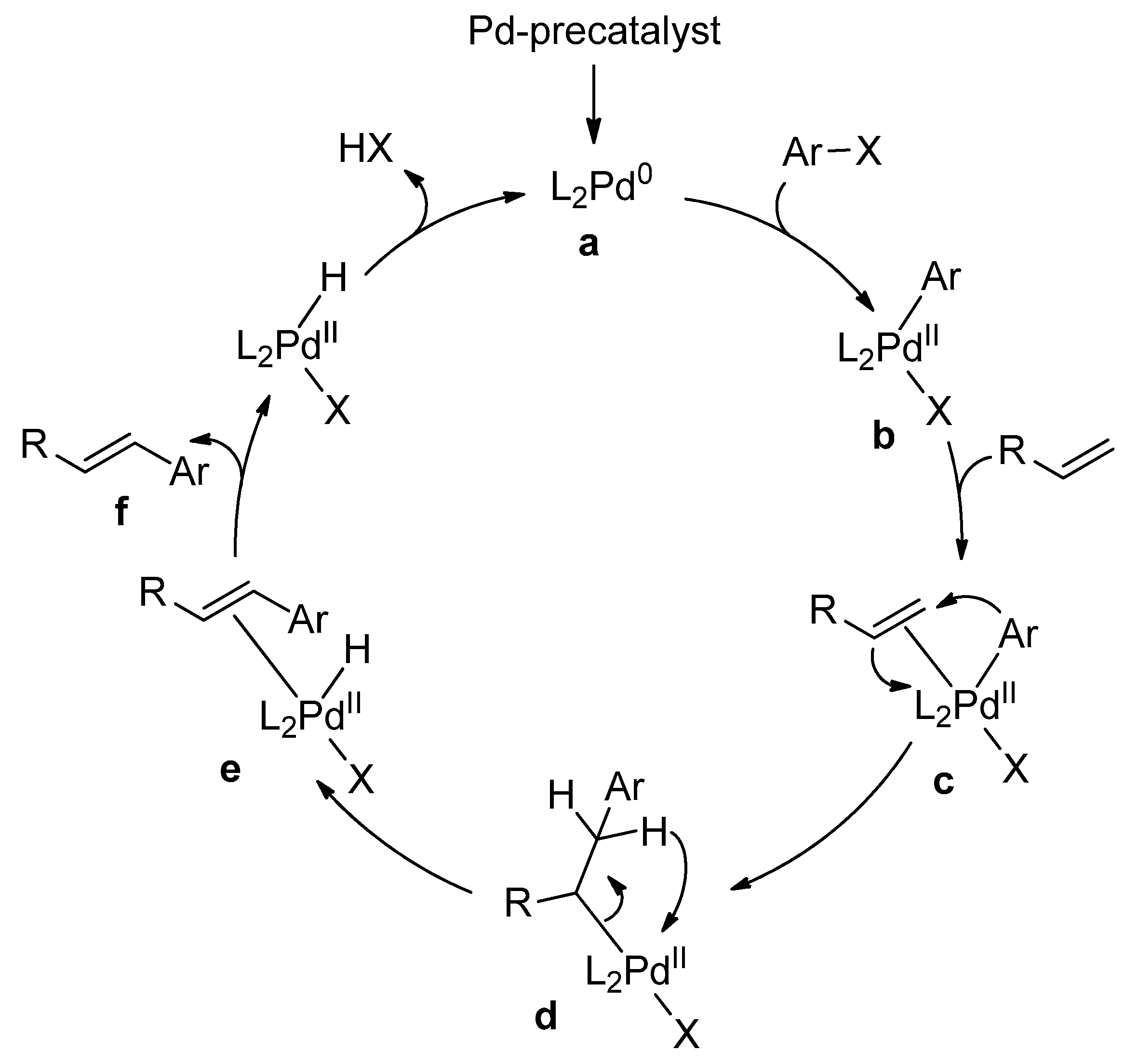









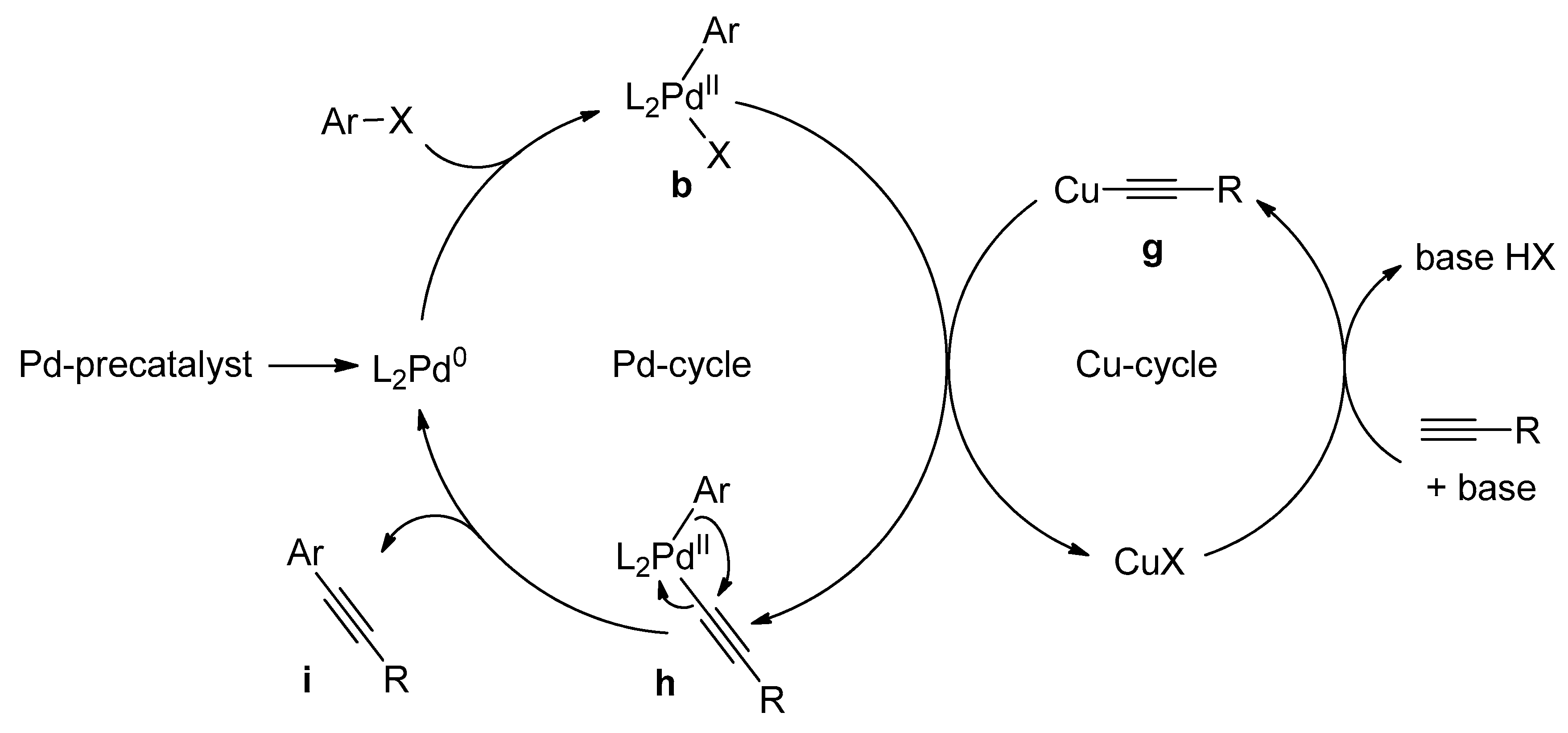






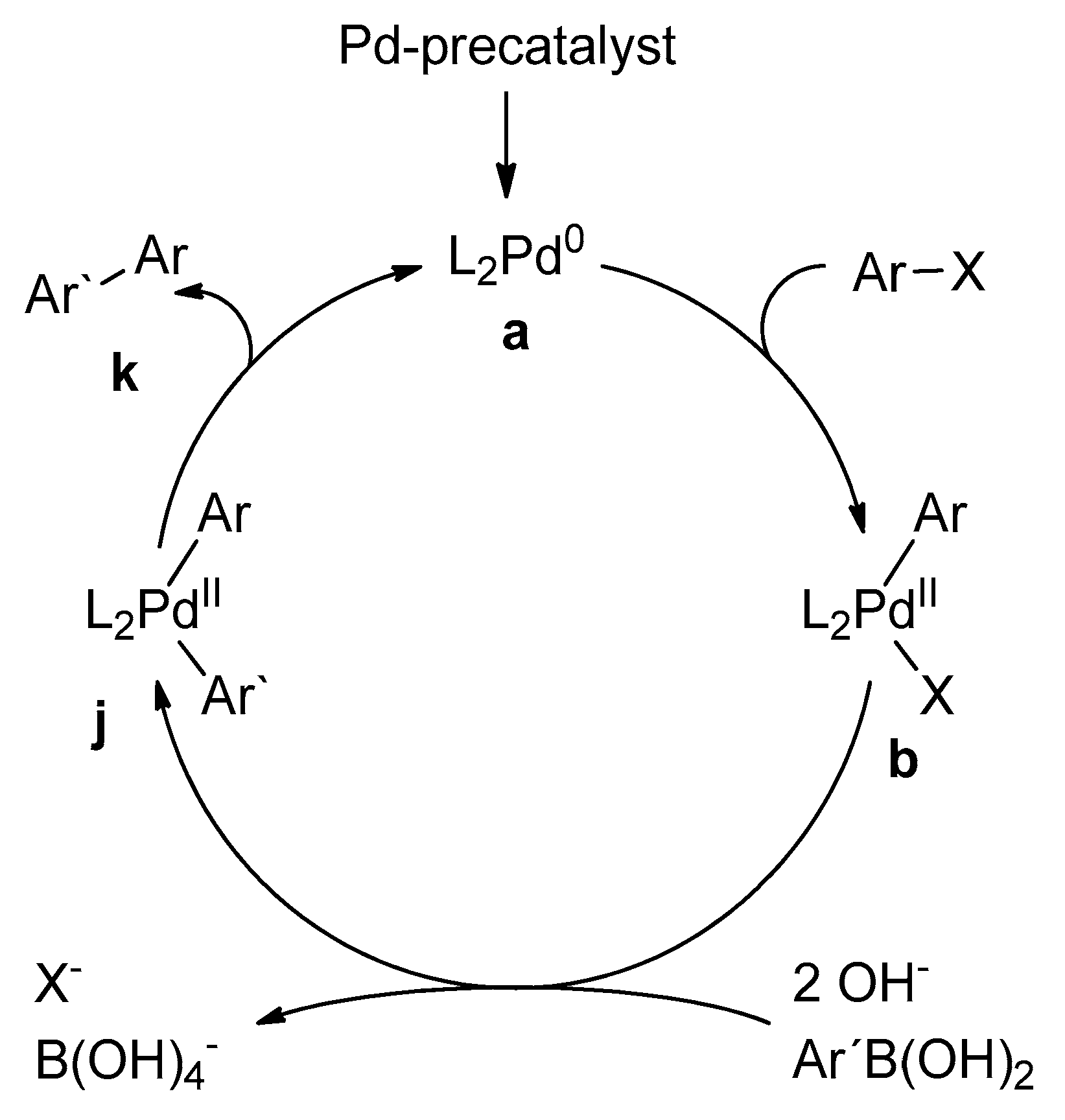
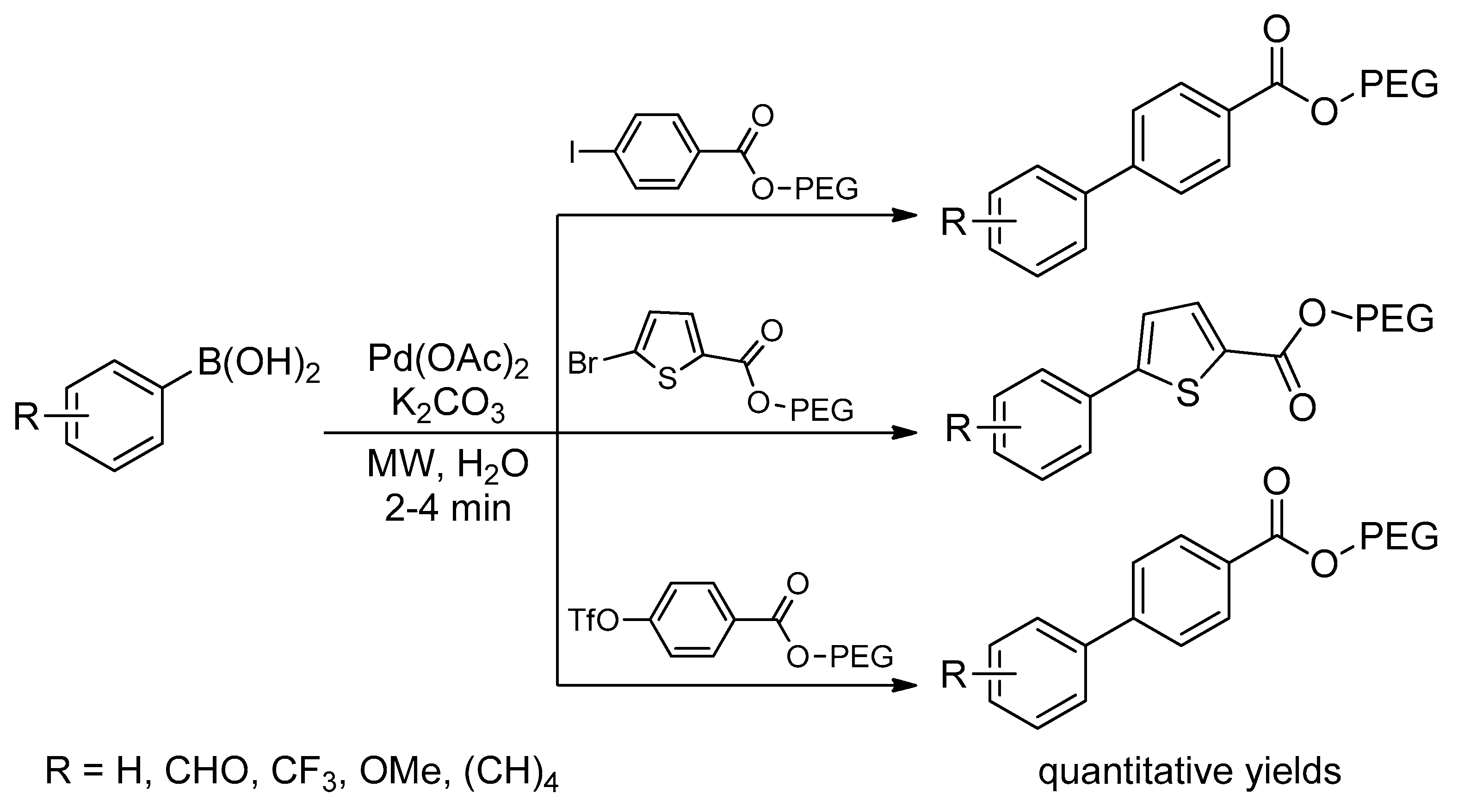

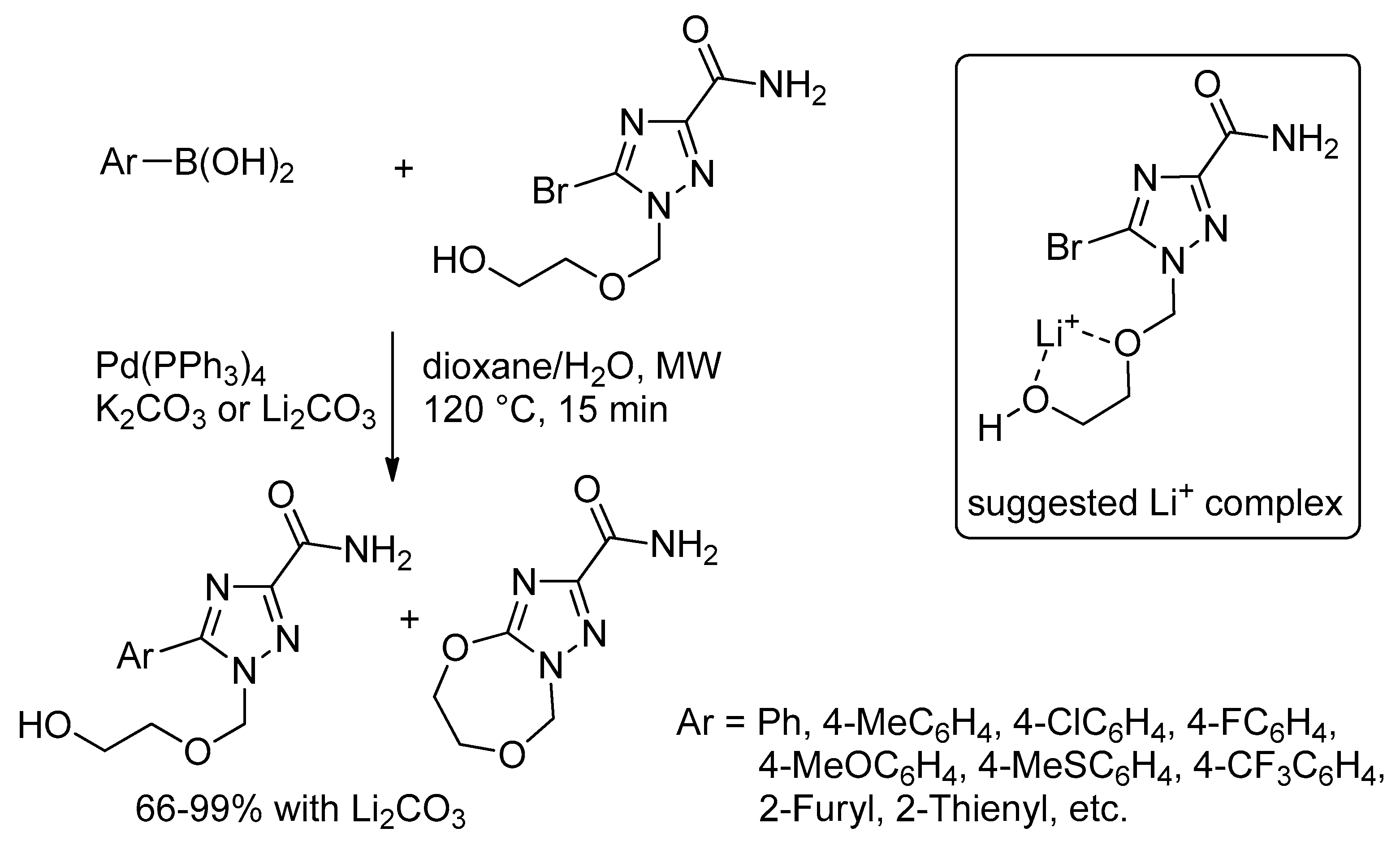






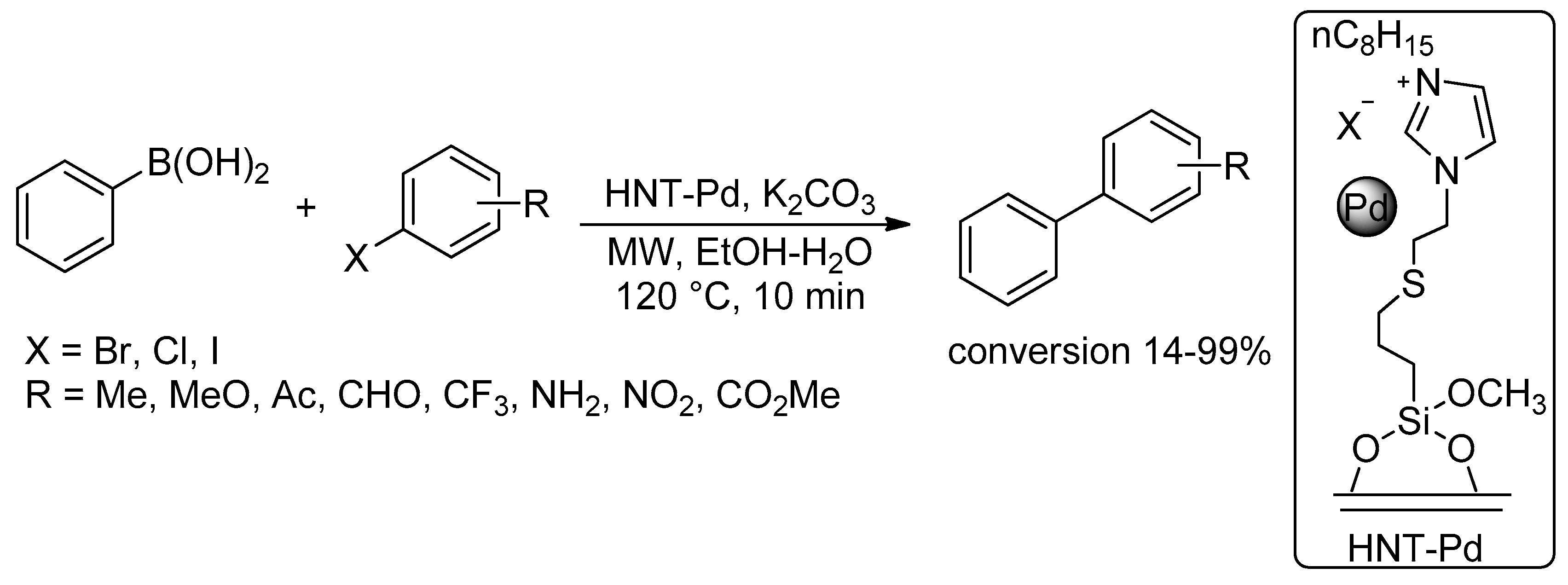
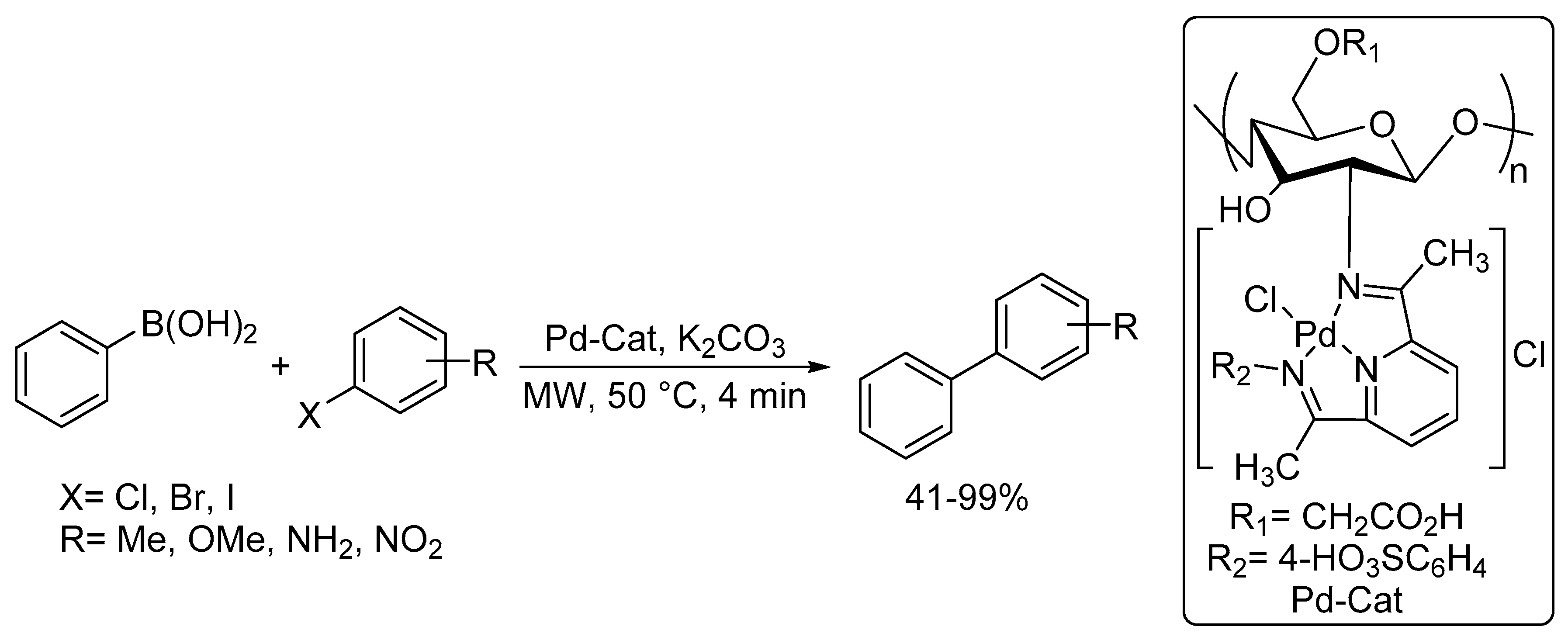
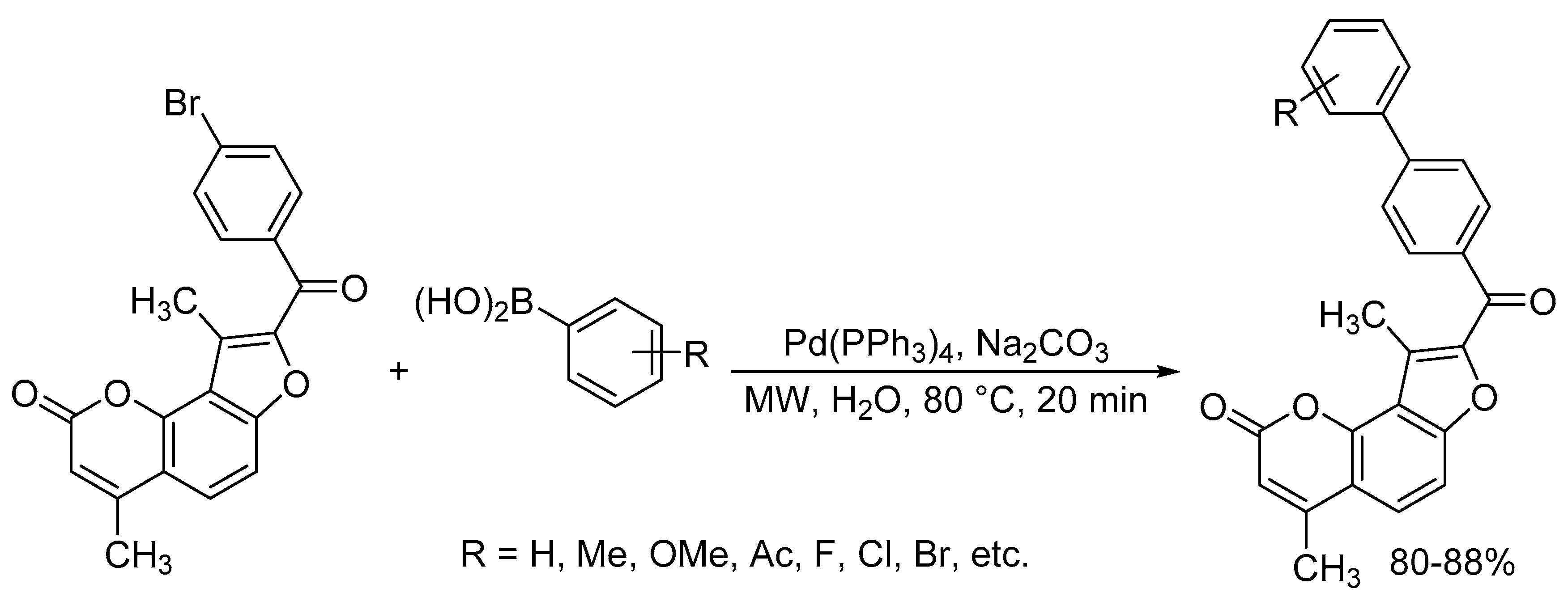




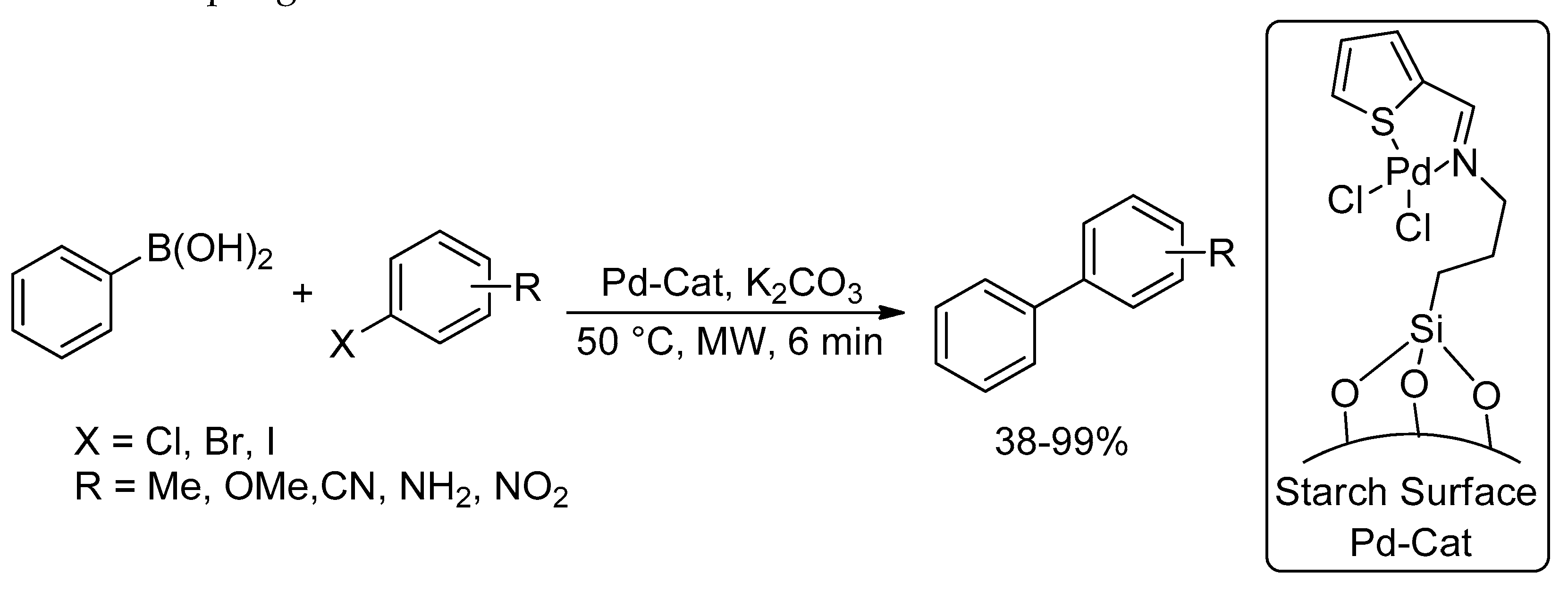



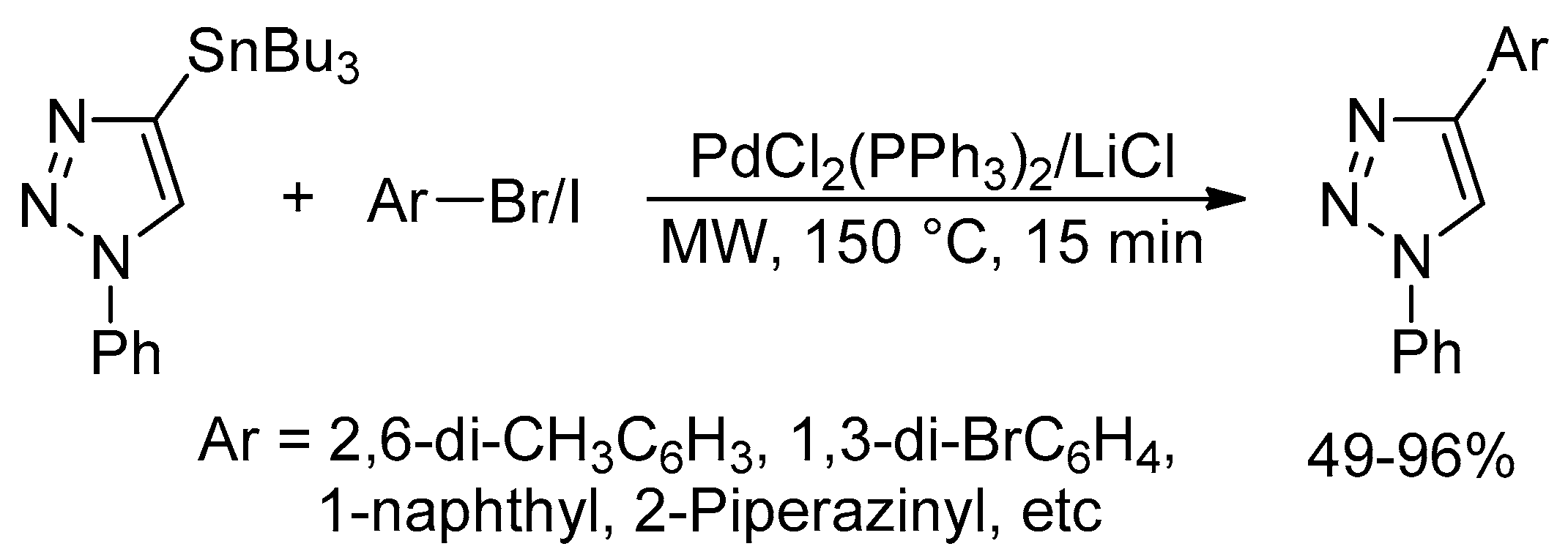







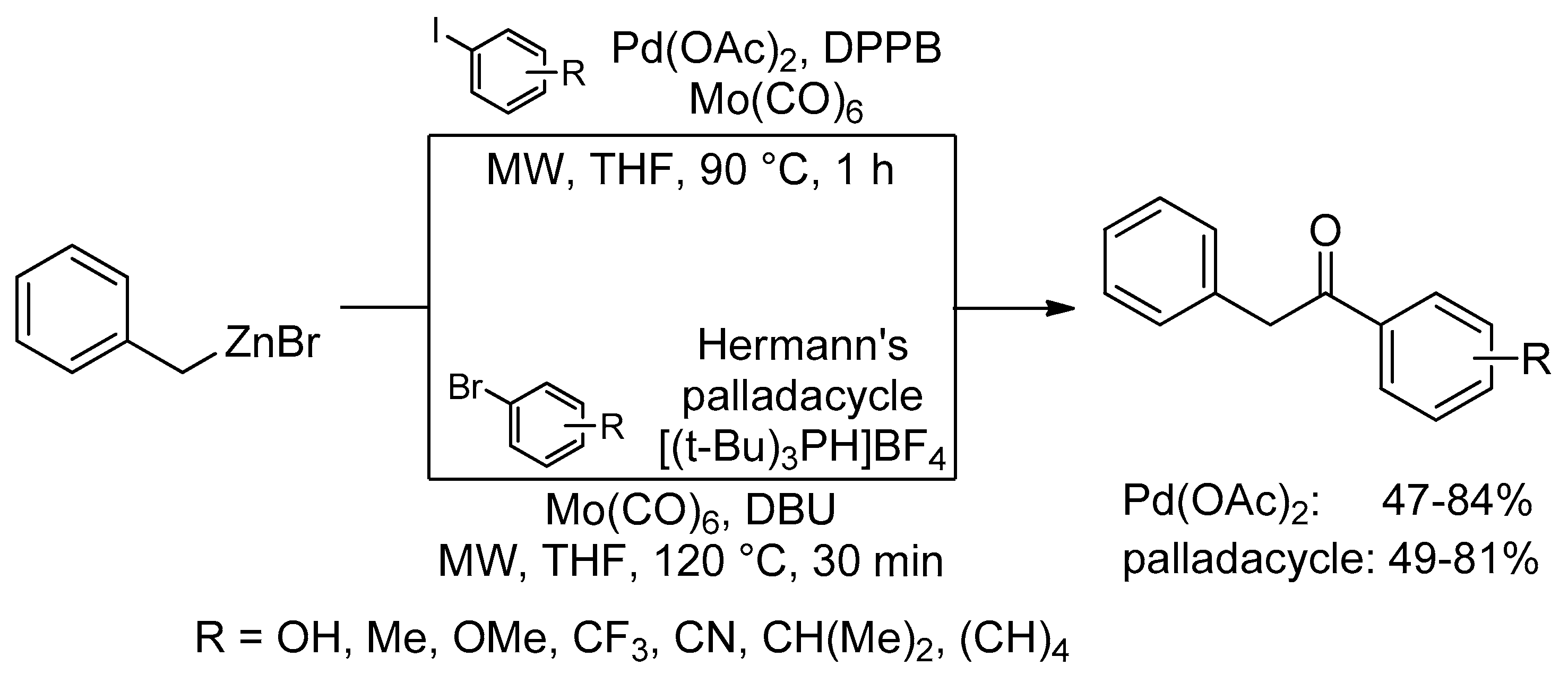











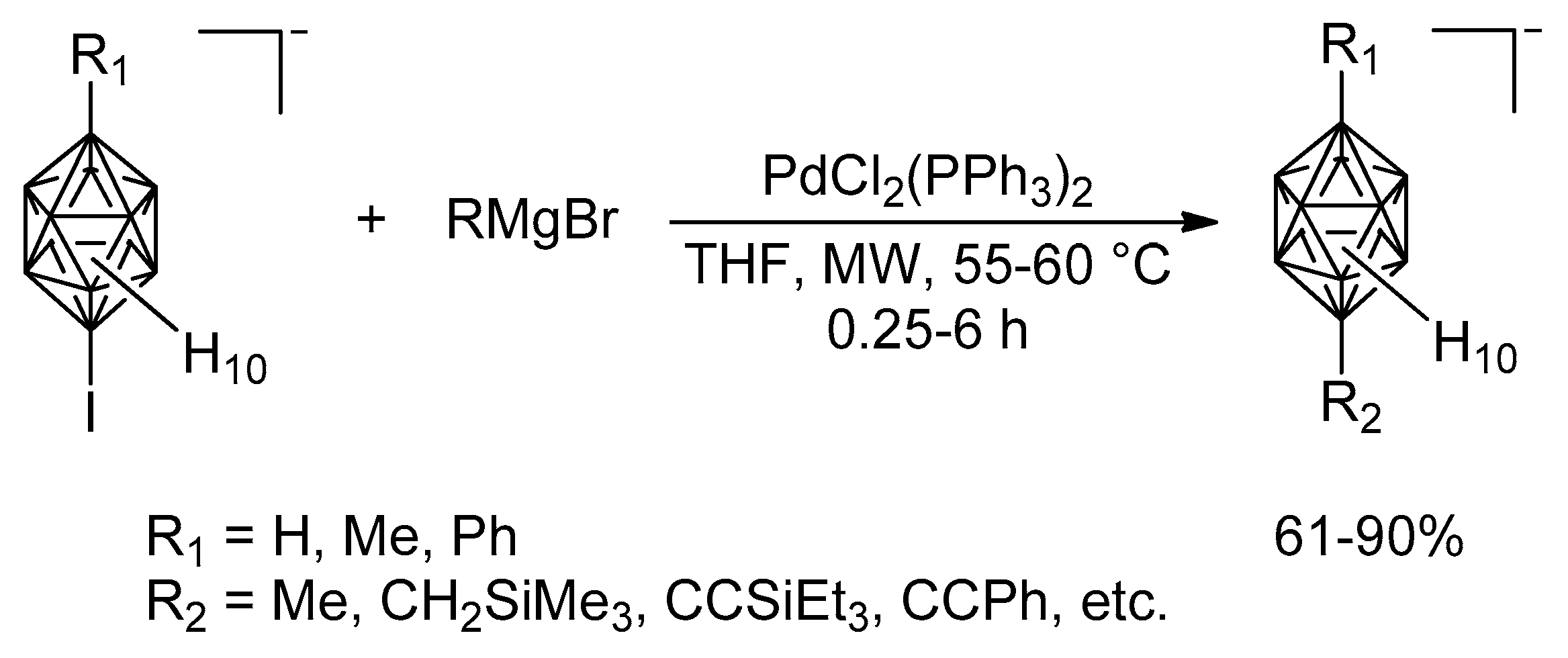



© 2019 by the authors. Licensee MDPI, Basel, Switzerland. This article is an open access article distributed under the terms and conditions of the Creative Commons Attribution (CC BY) license (http://creativecommons.org/licenses/by/4.0/).
Share and Cite
Salih, K.S.M.; Baqi, Y. Microwave-Assisted Palladium-Catalyzed Cross-Coupling Reactions: Generation of Carbon–Carbon Bond. Catalysts 2020, 10, 4. https://doi.org/10.3390/catal10010004
Salih KSM, Baqi Y. Microwave-Assisted Palladium-Catalyzed Cross-Coupling Reactions: Generation of Carbon–Carbon Bond. Catalysts. 2020; 10(1):4. https://doi.org/10.3390/catal10010004
Chicago/Turabian StyleSalih, Kifah S. M., and Younis Baqi. 2020. "Microwave-Assisted Palladium-Catalyzed Cross-Coupling Reactions: Generation of Carbon–Carbon Bond" Catalysts 10, no. 1: 4. https://doi.org/10.3390/catal10010004
APA StyleSalih, K. S. M., & Baqi, Y. (2020). Microwave-Assisted Palladium-Catalyzed Cross-Coupling Reactions: Generation of Carbon–Carbon Bond. Catalysts, 10(1), 4. https://doi.org/10.3390/catal10010004





